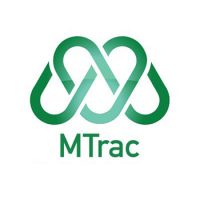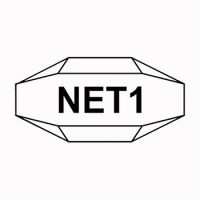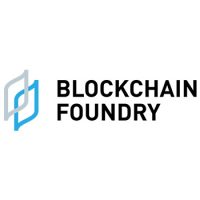Latest News

From April 25 to 26 local time, the AI & Big Data Expo Global 2019 was held in Olympia, London. This is a two-day expo showcasing the next generation of technologies and strategies in AI and big data, attracting more than 4,000 relevant practitioners. Dr. Wei Cui, co-founder and chief scientist of Squirrel AI Learning, was invited to give a speech at the Expo and he also shared his insights into AI with senior executives from Darktrace, a UK cyber security company; SAP, the world’s third largest independent software provider; Reddit, one of the largest social platforms in the United States; and Just-Eat, a Danish company equivalent to “Meituan”.
The themes of this expo include: enterprise AI, AI and Internet of Things data analysis, big data business solutions and AI technology solutions.
Dr. Wei Cui from Squirrel AI Learning: How Does AI Provide Economical and Individualized Education for Every Family in China
Dr Wei Cui, chief scientist of Squirrel AI Learning, introduced the AI adaptive learning system independently developed by Squirrel AI Learning. This system can continuously monitor and evaluate students’ individual abilities, find their weaknesses in learning and allow students to progress at their own pace so as to improve their learning. The system provides optimized learning solutions and simultaneous counseling to maximize learning efficiency and improve students’ ability to acquire knowledge and skills.
For years, the lack of senior teachers and geographical problems have adversely affected the popularization of quality education in China. Squirrel AI hopes to train “super teachers” through AI and provide one-on-one tailored education for students.
In his speech, Dr. Wei Cui introduced the basic technologies used to build the system and carry out performance evaluation experiments. Squirrel AI Learning’s adaptive educational engine includes three layers of architecture: ontology layer, algorithm layer and interactive system. Content-focused, the ontology layer incorporates learning maps and knowledge maps. Squirrel AI Learning independently developed the technology to disassemble knowledge points at a super-nano level, making for more accurate determination of the knowledge points students are supposed to master. Take mathematics of junior high school as an example. Squirrel AI Learning can disassemble the 300 knowledge points into 30,000.
The algorithm layer includes content recommendation engine, students’ user portrait engine and target management engine. Based on user status evaluation engine and knowledge recommendation engine, Squirrel AI Learning will build a data model to detect the gaps of knowledge for each student accurately and efficiently and then recommend corresponding learning content according to these gaps.
The interactive system collects interactive data to learn more about students and improve the algorithm. Squirrel AI Learning cooperated with Stanford Research Institute to study the machine-student interactive system. Its self-developed MIBA student behavior data acquisition system won big award at the World Conference on AI.
In addition, the MCM system developed by Squirrel AI Learning can disassemble students’ model of thinking, capabilities and methods of learning and then provide training of these abilities and methods in a single subject according to students’ learning status.
By the beginning of this year, Squirrel AI Learning has set up nearly 2,000 learning centers in more than 300 cities across China with nearly 2 million registered student users. Last year, Squirrel AI donated 1 million free study accounts to underprivileged families to promote education fairness.
Marc Teerlink, SAP’s Global Vice President: How to Realize “Gold Rush” in the Era of AI
Marc Teerlink, SAP’s global vice president, talked about how enterprises adapt to the era of AI. The world is currently on the verge of a “gold rush” with AI. Teerlink’s speech is about how AI and machine learning bring wealth to enterprises as well as experience sharing by current industry leaders.
SAP estimates that by 2030, more than 60% of jobs will face great changes. About 51% of work will be automated but only 5% will be completely done by machine. Therefore, Teerlink prefers to call this era the era of “augmented intelligence” in which technology is used to enhance human’s ability to process information.
Teerlink said that partners using SAP machine learning software have translated algorithms into commercial profits. He cited one example: VALE, a Brazilian-based global mining company, used machine learning to optimize its procurement application process.
The current process is a purely manual one in which scattered information is distributed in multiple files and systems. As a result, 25-40% of the purchase requisitions are rejected every month due to errors, resulting in severe rework.
In the past few years, VALE has started to use SAP Leonardo open innovation framework based on design thinking and technology to define a re-conceived application process that provides an SAP Fiori application accessible from any device to help users complete the end-to-end process without logging into any back-end device systems.
Machine learning for image recognition is the core of this process. Image recognition algorithm is integrated into the application of SAP Leonardo machine learning so that maintenance technicians can recognize the serial number of the materials of any parts that need to be replaced by taking pictures of them. Even without Internet access, technicians can still take pictures of the parts and complete the purchase application process later.
Once the parts are identified, the application will connect to the back-end system and find the correct procurement process for the material, be it contract process or purchase requisition, and then the application will automatically complete the procurement requisition process and check whether the parts have been requested on the previous shift or exist in any nearby deposits.
This procedure streamlines the procurement application process, reduces the delivery cycle of procurement, reduces spare parts inventory, thus reducing working capital and improving labor efficiency.
Enterprises like VALE that have long engaged in AI have already tasted the sweetness. SAP observes that these enterprises generally have the following characteristics: the strategic center of C-level executives, increased competitive differentiation, new income and profitability, and strategies covering the whole field. They all view data as important assets.
Dave Palmer, Technical Director of Darktrace: How Does AI Affect Cybercrime
Darktrace is a British start-up in network security that mainly provides “corporate immune system” that can be deployed in company network to monitor network anomalies. Once suspicious behavior occurs within the network, Darktrace will remind IT managers and, when necessary, automatically trigger protection behavior to mitigate network attacks. Unlike traditional methods that rely on rules or signatures, this automated technology enables security teams to focus on high-value tasks and even to counter fast-moving automated attackers.
Dave Palmer believes that AI will greatly increase the impact of cyber crime on enterprises. Due to the open source environment of computer science and the introduction of various API & SDK by large companies, even people without relevant backgrounds can easily acquire and use AI technology such as face recognition and voice recognition, which greatly lowers the threshold of cyber crime.
Unlike planting a virus or malicious software in the system in the past, network attacks now take many forms and are more and more extensive. For example, stealing your data for blackmail, monitoring important meetings of competing companies, or modifying your data from the bottom to influence the decision-making of your superiors, etc.
Therefore, many companies are deeply engaged in network security protection. For example, Microsoft launched its cloud-based risk security detection tool in 2017 with which developers find bugs and other security vulnerabilities in software to be released or used. The tool is designed to fix bugs before software vulnerabilities occur.
Anand Mariappan, Senior Director of Reddit: Development History of Reddit Machine Learning
Anand Mariappan, senior director of Reddit in charge of search and machine learning engineering, reviewed the history, current projects and future direction of Reddit’s machine learning that covers data platforms, feed rankings, recommendations, user and channel similarities.
Reddit, the US version of “Tianya” and “Baidu Tieba”. According to the data released by Alexa, Reddit is the fifth largest website in the United States, ranking 14th in the world and even surpassing Facebook in traffic. Reddit currently has 330 million active users, nearly 140,000 active communities, 12 million posts and nearly 100 million comments per month. In February this year, Tencent invested $150 million into Reddit. Reddit is currently valued at $3 billion.
Reddit has been building and improving data pipelines over the past few years. Since 2014, it has been using Amazon S3 and Hive to gradually build a multilevel database architecture based on MIDAS, and now the architecture is based on Google’s BigQuery.
Reddit has 140,000 sub-Reddit, which can also be understood as channels. Recommending relevant channels to users is an important way to increase user participation, which was done through manual selection. Now deep learning takes the place of manual selection. Through deep learning, Reddie can directly gather all comments in a channel into a file and then use the end-to-end doc2vec model to train and get semantic information to assist in the matching.
Reddit also optimized the recommendation on the home page. It uses large-scale logistic regression algorithm to make personalized content recommendation based on parameters such as time, channel, user interest, and device.
Mariappan said Reddit is currently developing machine learning programs to optimize personalized models, and has achieved amazing results in the early development phase by using models on TensorFlow to improve the quality of content recommendation.
Ben Dias, Head of Royal Mail: From Zero to Data Science
Ben Dias, head of analysis and data science at Royal Mail, shared his experience of “from zero to data science” and summarized seven key points, hoping to help enterprises accelerate their progress in developing data science by providing practical skills, tools and technologies.
First, be prepared. Enterprises should first understand themselves and be fully prepared in areas of data processing, standard business intelligence analysis, underlying architecture and technology stack.
Second, lay more emphasis on retention of talents than recruitment. Don’t rush to look for talents outside the enterprise. Instead, enterprises should train and retain talents and nurture suitable office culture.
Third, don’t hire “super chicken”. Super chicken refers to highly talented and motivated employees. Margaret Heffernan, an expert in business management consulting, pointed out in a TedTalk that a team of geniuses will not be more efficient, but rather has disastrous performance. Successful teams do not need superstars but collaborative staff working based on consensus.
Fourth: Don’t put all eggs in one basket. Enterprises should comprehensively consider short-term benefits, medium-term considerations and long-term planning.
Fifth, adopt the model of Lean Startup. Lean Startup is a method of developing business and products, aiming to shorten product development cycle and quickly find out whether the proposed business model is feasible. This model is achieved through a combination of business hypothesis-driven experiments, iterative product release and proven learning.
Sixth & Seventh: You must change everyone and everything & apply scientific methods to everything.
Gilles Comau, Head of Just Eat AI: Challenges and Opportunities of Building Personalized Strategies.
Gilles Comau is Just Eat’s director of machine learning and AI. Just Eat, founded in 2001, is a take-out ordering website in Denmark. It provides applications to enable consumers to easily place orders and make payment. Now it has operations in many countries around the world. In 2014, Just Eat was successfully listed on the London Stock Exchange with a market value of $2.4 billion.
Comau’s speech is centered on the challenges and opportunities of building personalized strategies. Delivery services involves millions of similar but greatly different products. Delivery areas also have geographical limitations, which needs to be optimized through algorithms.
Just Eat’s big data analysis helps predict what kind of food users will order at a particular time. For example, big data generated by Just Eat enables analysts to predict which regions are most likely to order healthy food and which regions prefer food collection to delivery.
Results of big data analysis of users’ eating patterns and trends will be provided to restaurants to help them meet various needs and increase menu items. This can help them grow their business.
Just Eat has more than 60 million accounts and at least 7.5 million people have multiple accounts. Therefore, Just Eat needs to use data science to delete repeated accounts and link users with similar attributes.
The match between restaurants and users helps users find delicious food more conveniently. The restaurant’s attributes are mainly based on the food it mainly recommends, including the flavor, attributes, taste, and ingredients of food. User profile is determined by ordering habits, preferences, social attributes, trading habits, contact information, etc.
These attributes will help Just Eat build a two-dimensional and visual vector search space. When searching delicious food through key words, users can get what they want just by judging which vector their key words are the closest to.
Machine learning is also used to deliver orders to customers fast through prediction of driver paths and improvement of communication efficiency so as to deliver food fast, maintain correct delivery order and prevent lost delivery orders.
SOURCE Squirrel AI Learning
Latest News
Casino Kings Knocks Out Partnership with Boxing Powerhouse BoxNation

Two titans of entertainment are joining forces! UK-licensed casino and sportsbook, Casino Kings, and the legendary boxing platform, BoxNation, have announced a dynamic new partnership, set to deliver a knockout blow of exclusive content, promotions and responsible betting experiences for fans. Becoming their official boxing betting partner, Casino Kings is stepping into the ring with one of the most respected names in the fight game, promising fans a ringside seat to even better betting.
This isn’t just a bell ringing for another sponsorship deal; it’s a knockout partnership designed to bring you closer to the action than ever before. Casino Kings branding will be engrained into the boxing industry, prominent across BoxNation’s popular YouTube channel through branding and content, where the biggest names and personalities in boxing step into the spotlight for exclusive interviews.
For you savvy fight fans, Casino Kings will be rolling out a series of exclusive offers, adding even more thrill to 2025’s already-explosive boxing schedule. And here’s a great way to kick things off: Casino Kings is welcoming new members with a £35 Free Bet! Just deposit a minimum of £10 and place bets of £10 or more to grab yours. Don’t miss out!
Given BoxNation’s powerful presence in the boxing arena and Casino Kings’ reputation as a premier UK online casino and sports betting platform, this partnership is bound to be a knockout you won’t want to miss.
“We’re buzzing to partner with BoxNation—this really puts Casino Kings in the heart of the action.” Says Jack Dunn, COO of Casino Kings. “The team have been absolutely brilliant, and we’re excited to get stuck into some top-tier behind-the-scenes boxing content for the fans!”
“BoxNation is delighted to announce our partnership with Casino Kings. Casino Kings has a great reputation for delivering sports and entertainment options for users. We look forward to working together with Casino Kings to create a safe and enjoyable experience for fans.” adds Umar Ahmed, BoxNation Channel Lead.
Want to be the first to know? Follow Casino Kings and BoxNation on social media now for instant updates, special offers, and all the ringside action!
About BoxNation:
BoxNation is a dedicated boxing news and media outlet, providing fans exclusive interviews and behind the content featuring the boxing’s biggest names and personalities. With over 95k YouTube subscribers and 50 million plus views, BoxNation is delivering the best boxing content from all around the world. To find out more about BoxNation, visit: www.youtube.com/@BoxNationOfficial
About Casino Kings:
Casino Kings isn’t just another UK-licensed online casino and sportsbook – it’s a platform that puts player well-being first. Deeply committed to responsible gambling, they offer a secure environment equipped with robust tools to empower users to manage their play effectively. Beyond this dedication, Casino Kings delivers consistently fair and competitive odds across a thrilling selection of sports. Plus, the king casino team consistently provides their players with the best welcome bonuses, weekly promotions, daily offers, and much more!
Let’s keep the fun in the game. Please remember to gamble responsibly. 18+ only. For more information, visit: www.gambleaware.org.
Blockchain
India’s Fintech Market to Reach $990 Billion by 2032 at 30.2% CAGR – Fintech Firms Eye Untapped Indian Digital Payments Market with Secure, Low-Cost Digital Financial Solutions
Blockchain
Colb Asset SA Raises $7.3 Million in Oversubscribed Round to Bring Pre-IPO Giants to Blockchain
-

 Blockchain Press Releases4 days ago
Blockchain Press Releases4 days agoHTX Premieres USD1 Stablecoin Globally, Partnering with World Liberty Financial to Forge a New Era of Decentralized Economy
-
Blockchain3 days ago
Colb Asset SA Raises $7.3 Million in Oversubscribed Round to Bring Pre-IPO Giants to Blockchain
-

 Blockchain3 days ago
Blockchain3 days agoBlocks & Headlines: Today in Blockchain – May 7, 2025 | Coinbase, Riot Games, Curve DAO, Litecoin, AR.IO
-

 Blockchain Press Releases4 days ago
Blockchain Press Releases4 days agoJuCoin made a global impact at TOKEN2049 Dubai, advancing its ecosystem with the “Peak Experience” vision and JuChain’s robust tech.
-

 Blockchain Press Releases2 days ago
Blockchain Press Releases2 days agoHTX and Justin Sun Launch $6M Mars Program Special Edition, Offering One User a Historic Space Journey
-

 Blockchain Press Releases3 days ago
Blockchain Press Releases3 days agoGRVT Launches Biggest Ever Trading Competition for Retail Traders, Offering Up to 175,000 USDT in Prizes
-

 Blockchain2 days ago
Blockchain2 days agoBlocks & Headlines: Today in Blockchain – May 9, 2025 | Robinhood, Solana, Tether, China, Women in Web3
-

 Blockchain4 days ago
Blockchain4 days agoBlocks & Headlines: Today in Blockchain – May 6, 2025 | Arkham, DMG Blockchain, Solana, Prologis








































